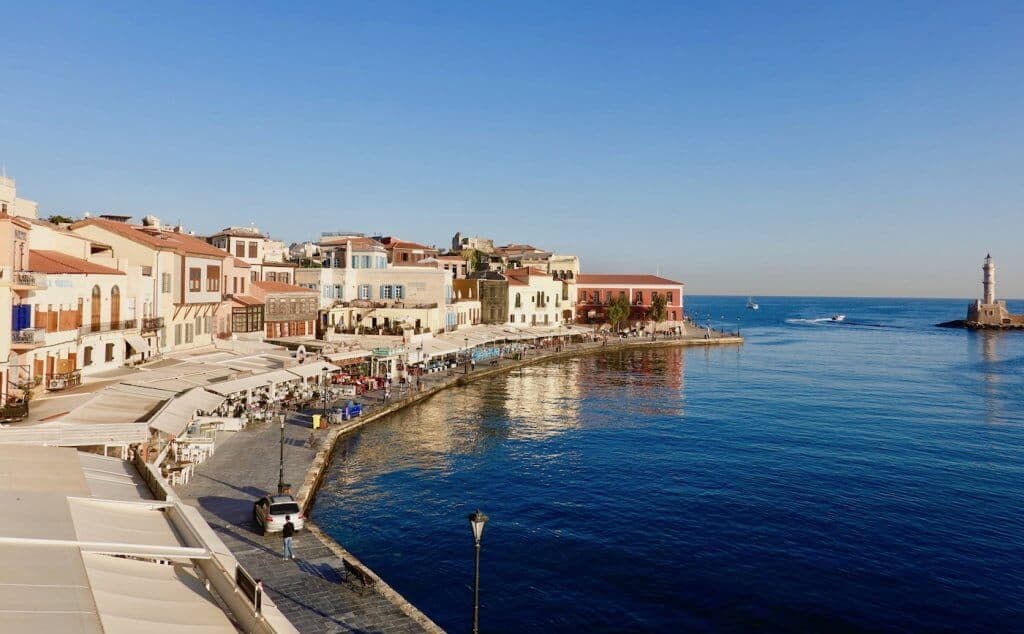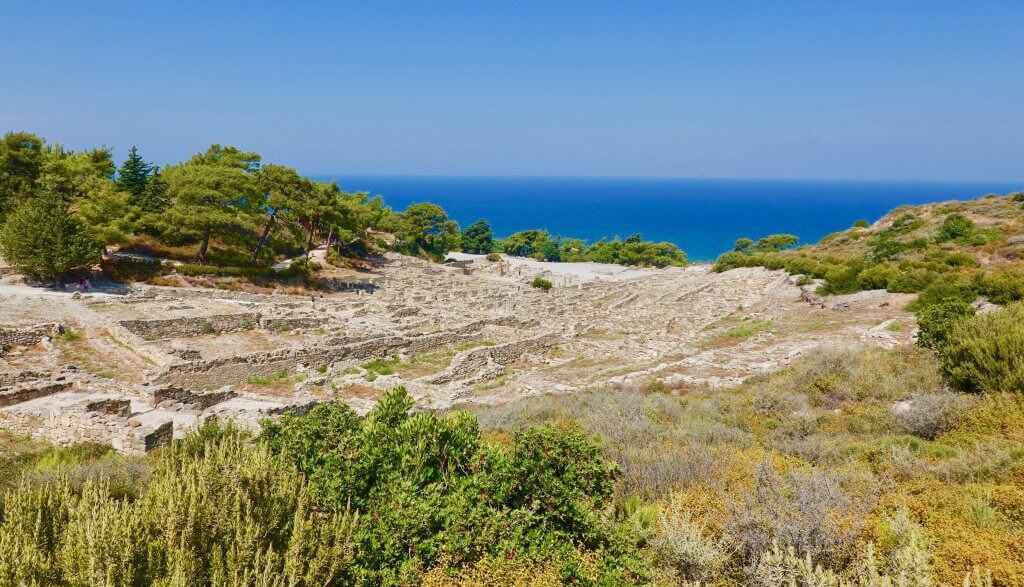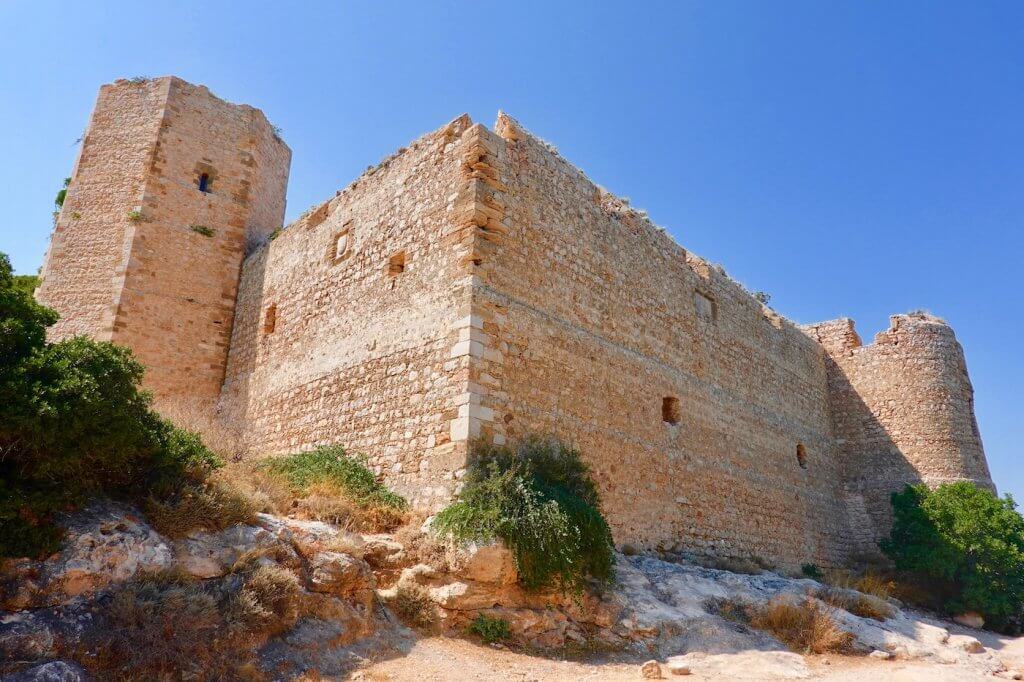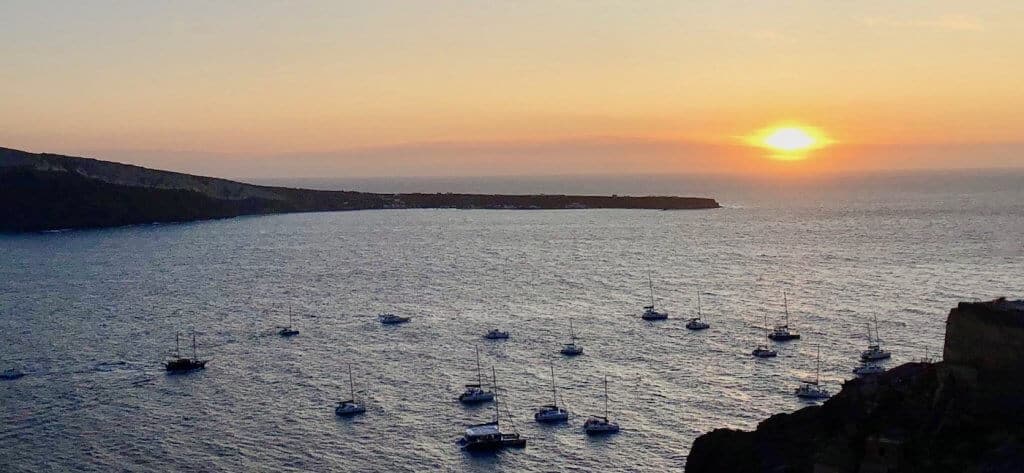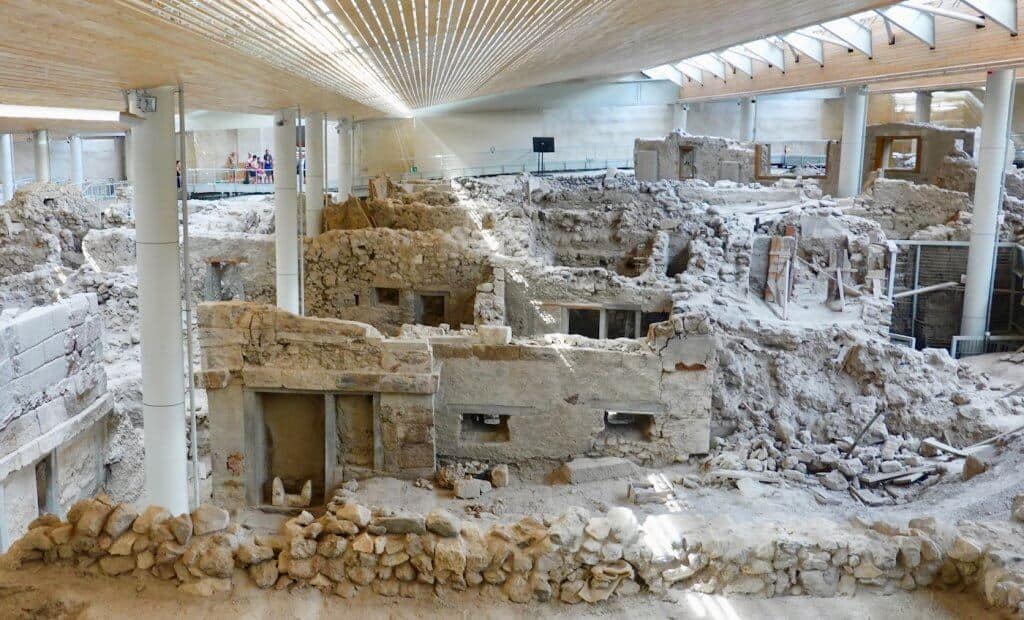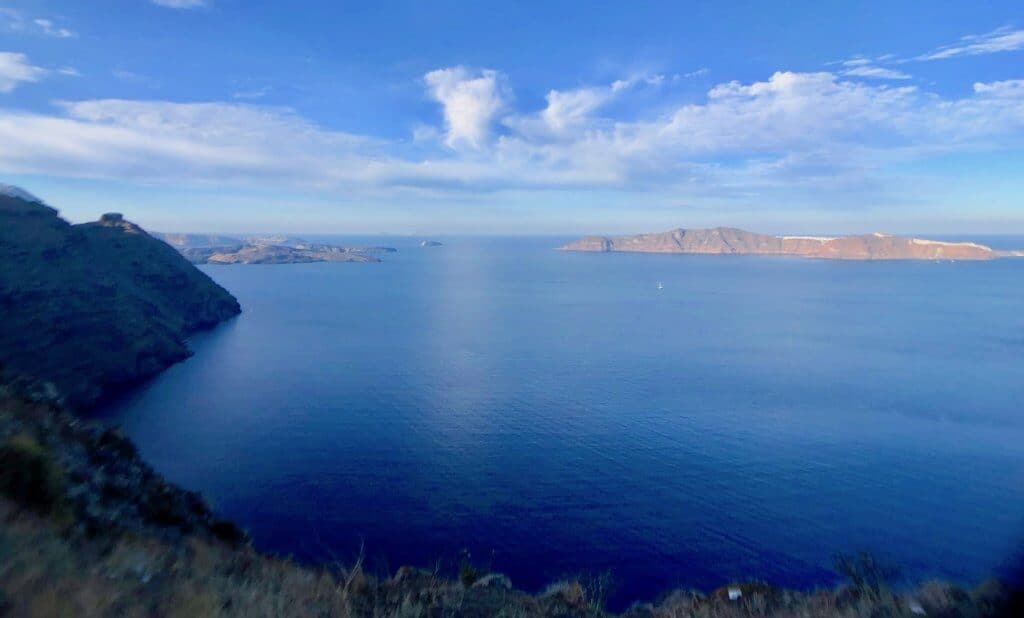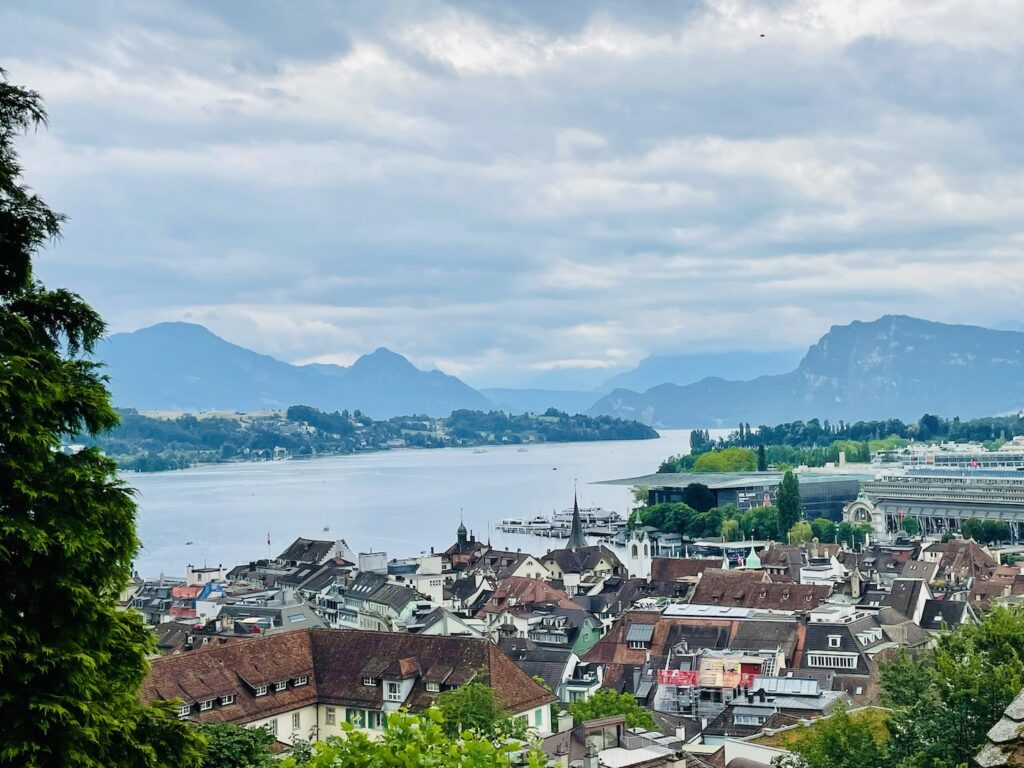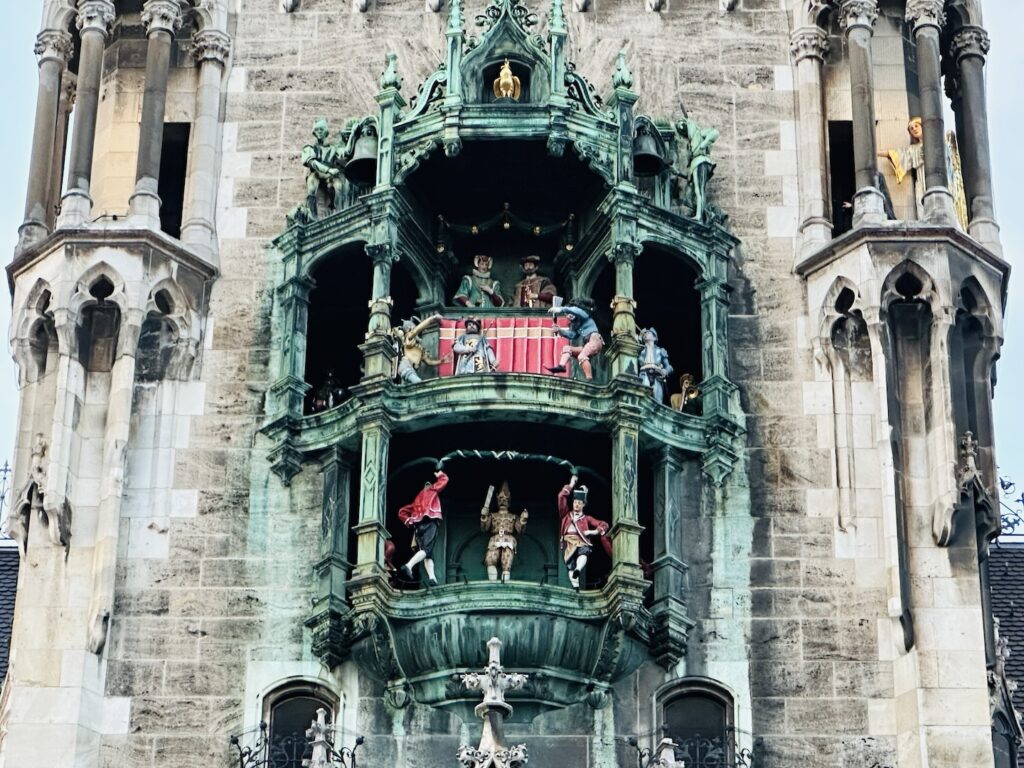Greece ranks as one of the most popular countries to visit in Europe. And rightly so. As Socrates once stated, “Not life, but good life, is to be chiefly valued.” This ancient Greek — who often shared his wisdom at the Ancient Agora in Athens (which you can visit) — hit the nail on the head over two centuries ago. There is certainly a lot of good life to enjoy in Greece. The challenge is deciding which regions of Greece to tackle for your trip. There are that many terrific choices when planning a trip to Greece. My husband and I spent two weeks in Greece and enjoyed a fabulous time.
Two weeks in Greece is not nearly enough time to do this beautiful country justice, but it’s a good start. In two weeks, you can see most of the highlights you have on your list. Most assuredly, you’ll want to return to enjoy other parts of the country on a future visit.
With islands numbering in the thousands, there are many great ones from which to choose. Some are big names like Mykonos and Santorini; others are less well known but still offer welcome hospitality, great food, and stunning views. Here’s where some research is important, as you’ll want to seek out those islands that suit your interests. For example, some islands are well known for:
- history (like Aegina, Chios, Crete, Delos, Naxos, and Rhodes),
- great beaches (like Chios, Corfu, Crete, Mykonos, Naxos, Paros, and Santorini),
- nightlife (like Hydra, Ios, Mykonos, Naxos, Paros, Rhodes, and Santorini), and
- being off-the-beaten-path (like Amorgos, Folegandros, Fourni Island, Karpathos, Leros, Paxi, Samothraki, Sifnos, and the Small Cyclades)
In Greece (as in many places), it’s important to slow down so you can experience a place, meet some locals, and really understand life there. While it’s important to see the major highlights of a place, it’s also wise to enjoy a place by strolling down streets in a town or paths on a hike, talking with those who live there, and lingering over leisurely meals of local fare. By actually staying on the islands for a few days, you can experience quite a bit without feeling rushed.
Please see the end of this article for links to my collection of posts about our two-week trip to Greece.
Suggested Two-Week Itinerary
In two weeks, you could easily cover these highlights:
Athens
This is a starting point for many since it is the capital, and its airport services flights from just about anywhere in the world.
Highlights for a short stay in Athens include the following:
- Acropolis – You can see it from just about anywhere in the city, but you need to get up close and personal. Arrive early because it gets very crowded beginning at midday. I recommend a guided tour to help contextualize Greek mythology and history.

The Parthenon in Athens is the most famous temple in the world. It sits on the Acropolis (meaning “high city”) along with other important monuments, including the Temple of Athena Nike. - Acropolis Museum – Celebrating its 10th anniversary in 2019, it houses most of the archeological finds from the Athens Acropolis that remain in Greece.

The Acropolis Museum holds many of the artifacts found on the grounds of the Acropolis as well as those found under the museum itself. Visitors can peer through clear floors onto the archeological remains of early city inhabitants. - Ancient Agora of Athens – Walk through the agora and imagine yourself back in ancient Athens at this gathering area where you’d find politicians, philosophers (like Aristotle, Plato, Socrates), merchants, and other residents of the city.

When entering the Ancient Agora, you’ll walk down the Panathenaic Way, which was the main thoroughfare between the Stoa of Attalos (now housing the Museum of Ancient Agora) and the Temple of Hephaistos. Several ruins, along with a statue of the Roman emperor Hadrian, are still visible. - Museum of the Ancient Agora – Located in the agora and rebuilt in the 1950s, this museum has archeological finds from the grounds of the agora. In addition to artifacts, the museum includes a detailed history narrative that helps put the artifacts into context.
- Roman Agora – This dates to the 1st century BC and was used by merchants and shoppers alike.
- National Garden – Commissioned by Queen Amalia in 1838, this urban oasis is in the city’s center. Many non-native plants were gifted to the Greek royal family. Also, there are animals that you’ll wander upon as you stroll through the gardens.

When entering the National Gardens, you’ll be greeted by many stately palm trees. - Changing of the Guards – Want to see Greek soldiers with high-step marches in action? There is a changing of the guard daily (every hour) in front of the Greek parliament. A special ceremony takes place each Sunday at 11:00 am.

The Changing of the Guards at the Tomb of the Unknown Soldier occurs 55 minutes past the hour in front of the Parliament building overlooking Syntagma Square. A full ceremony, with a band, happens on Sundays at 11 am. Come early to get a good viewing spot whichever day and time you choose.
Crete
Crete is the largest island in Greece and is located in the southern part of the country. It was home to Minoans, the earliest European civilization, around 2700–1420 BC. Today, it’s known for its historic sites; plenty of beautiful beaches; its rugged, natural beauty in the south; its lovely towns (Chania, Rethymno, Heraklion) in the north; and its reputation for having amazing food.
Highlights for a short stay in Crete include (from west to east):
- Chania – Spend a couple of nights, if you can, to enjoy this charming town built on a Venetian harbor.
- Walk out to the lighthouse, which dominates the view from the harbor.
- Visit the Maritime Museum of Crete to learn more about the maritime history of Crete.
- Visit the Firka Fortress, built by the Venetians to protect the harbor.
- Stroll the beautiful roads and alleys as you shop and enjoy Cretan food in the numerous restaurants.
- Take a tour or two into the countryside to learn more about olive oil, wine, and cooking or hike in one of the gorges on the island’s south side.

The harbor in Chania is lined with restaurants and shops. Also visible in this picture is the Maritime Museum at the end of the harbor (above) and the lighthouse.
- Rethymno – Here’s another charming town built on a Venetian harbor. The highlight of our visit to Rethymno was:
- Fortezza of Rethymno – Built on a hill by the Venetians in the 15th century and later occupied by the Ottomans, this fortress is an interesting place to wander to understand its history and take in the magnificent vistas of the sea and the city.

Venetians built the Fortezza of Rethymno in the 15th century and later used by the Ottomans and Germans. - the town itself to enjoy the harbor views, restaurants, and shops.

The Rethymno harbor offers perfect spots to enjoy a leisurely meal and watch the activity in the harbor.
- Fortezza of Rethymno – Built on a hill by the Venetians in the 15th century and later occupied by the Ottomans, this fortress is an interesting place to wander to understand its history and take in the magnificent vistas of the sea and the city.
- Heraklion – The capital of Crete and home to one of its airports, Heraklion is the fifth largest city in Greece. It’s a popular place for at least an overnight because of its proximity (about 4 miles) from the ancient ruins of Knossos. Highlights are:
- Palace of Knossos – Here, you’ll find ruins from the Minoan civilization that occupied this area as far back as 2,000 BC. Though it is mostly ruins now, a tour guide can contextualize the area.
- Heraklion Archeological Museum – Follow up your visit to the Palace of Knossos with a visit to this museum which houses artifacts from Knossos as well as other places.

These ruins represent where rooms were in the Palace of Knossos outside Heraklion, Crete. The Heraklion Archeological Museum displays many artifacts from this site and is just a few miles away in the city.
- Elounda – On the eastern edge of Crete you’ll find Elounda and its high-end resorts and spas. We didn’t travel there ourselves, but our good friends did and enjoyed the relaxation and beauty of the area.
- Beaches – Well, you’ll have much to choose from in Crete! With over 600 miles of coastline on this large island, there’s a beach for everyone. You’re never far from one, wherever you happen to be. There’s the famous Elafonissi Beach (a journey of about 47 miles from the old town of Chania), plus many more.

In southwestern Crete, Elafonissi Beach is a well-visited beach known for its shallow waters and light pink sand. It’s considered one of the best beaches in Europe. 
Close to the old town of Chania (on the peninsula to the northeast of the city) sits quiet Loutraki Beach — a relaxing spot.
Rhodes
This island sits to the east of Crete (part of the Dodecanese island group) in southern Crete. Rhodes is known for its rich historical heritage (a long history of being occupied by different cultures including the Minoans, Mycenaeans, Romans, Knights of the Order of St. John, and Persians) the Romans, the Turks, and the Italian – whew!). But that’s not all. Like its island neighbors, Rhodes offers plenty of natural beauty along with great shops and restaurants.
Whether you stay in Rhodes Old Town or Lindos (two major home bases for visitors), renting a car to explore other parts of the island might be worth your while.
Highlights for a short stay on Rhodes include:
- Old Town – Located on the island’s northern tip, the Old Town oozes charm within its medieval walls.
- Archeological Museum of Rhodes (Hospital of the Knights) – Built in the 15th century by the Knights of St. John, the museum has interesting archeological findings. I recommend hiring a tour guide (check online for options) so you gain a good understanding of the relics you’ll see.
- Palace of the Grand Masters – Located on the Street of the Knights, the palace was built by the Knights of St. John, a Catholic militia who ruled the island in the 14th and 15th centuries. The Italians rebuilt it in the 1930s.
- the harbor – Here, you’ll see the Fortress of St. Nicholas, some medieval windmills, and the marina.
- the town walls and the ramparts – Walking the town walls, thick ramparts (almost 40 feet in some areas), and dry moats that surrounded and protected the ancient city gives additional perspective to the challenges faced by the ancient occupants of the city.

Walking through the Old Town of Rhodes inside the medieval walls and along its fortifications is a must for visitors.
- Kameiros – Located on the western coast of Rhodes, you’ll recognize the importance of the lovely vistas that you’ll enjoy: there’s a mountainous area to the east and the sea is to the west. Both offered protection from enemies. Walk up the hill where the acropolis stood, then look down at the remaining ruins of homes, bath houses, and a temple. You’ll quickly see how this ancient city was planned.

The ancient town of Kameiros on the western coast of Rhodes was protected from enemies by the sea to the west and mountains to the east. The ruins show the location of the many residential homes, bathhouses, and temples. - Kritinia – Built on a hilltop in the 15th century to protect the villagers from potential conquerors, the castle (Kastellos) is now a ruin you can walk around. It offers phenomenal views of the sea and some other islands. It’s located on the western coast of Rhodes, south of Kameiros.

The castle in Kritinia is a lovely place to stop and enjoy the vistas of the sea and other islands. - Acropolis of Lindos – The island’s many conquerors have shaped and modified this acropolis over the centuries. Today it’s a popular tourist attraction with interesting sights, including a relief of a warship, a staircase dating from the 2nd century BC, ruins from the Temple of Athena, and towers from the Castle of the Knights of St. John. Lindos is on the eastern coast of Rhodes, about 30 miles southeast of the Old Town.

When visiting Rhodes, the Lindos Acropolis should be on any visitor’s must-see list.
Santorini
Enough said! This is a quintessential stop for most travelers to Greece.
Highlights for a short stay in Santorini include:
- Staying in Oia (pronounced EEE-ah) at a cliffside hotel to take in the sensational sunsets each evening. The town has plenty of shops and restaurants to keep you happy and well-nourished.

People flock to Oia on foot, by bus, and by boat to view the sunset each evening. Staying in a hotel on the cliffside will give you amazing views each evening — and if you’re lucky, your hotel will deliver your breakfast to your balcony so you can enjoy the morning views, too. - Visiting the Akrotiri – An active excavation site, it holds some ruins from an ancient Minoan town covered in volcanic ash in the 17th century BC. You’ll see two and three-storied buildings, a drainage system, furniture, and vase-like vessels that stored olive oil and wine.

The Akrotiri archeological site has uncovered a small fraction of this ancient town that was smothered with volcanic ash centuries ago. There are walkways through the site as you view the homes, storage vessels, and other artifacts. It’s an active archeological site, so you will probably see scientists at work digging into this town’s past. - Hiking the ridge from Fira to Oia – This is an almost 7-mile hike from the central town of Fira north to Oia. You’ll be able to see the caldera (the bowl-like cavity that is now filled with water) from high above and see for yourself the lasting impact of the volcano on the island’s topography. Plus, it’s a fun way to get exercise. I suggest you go early in the morning (we began the hike at 7:00 am) so you’ll arrive in Oia for brunch. On average, the hike takes about 3.5 hours.

The hike between Fira and Oia offers a big-picture view of the caldera formed from a volcanic eruption centuries ago. Santorini transformed from a large island to several islands as the water filled in the caldera (crater) left behind. - Visiting beaches and wineries – Santorini offers plenty of beaches, wineries, and a craft brewery to visit during your other island explorations.
Plan Your Trip to Greece
Figuring out an itinerary can be tricky — especially in Greece. There’s so much to see and not enough time to see it all. As always. Plus, with Greece, you also have the challenge of visiting a country that is spread out geographically — vast seas separate the mainland from the many islands.
To winnow down your list and help define your itinerary:
- Read about the different places in Greece — on the mainland and the islands. Get guidebooks and search online for more information.
- Make a list of all the places that speak to you. Do you most enjoy visiting historic spots, soaking up the sun on beaches, hiking in gorges and on trails? Do you want to take in the foodie or nightlife scenes?
- Prioritize the list of places — your must-sees. Thinking of visiting the islands? You may have a specific one in mind that you plan to spend time on. Or you might want to visit several; if so, consider doing some island hopping in the Cyclades (Santorini, Mykonos, and more) or in other island groups. You have lots of options!
- Calculate how much time you have for the trip.
- Based on what you want to see and experience in each spot, estimate how much time you need in each place, given the total time you have.
- Book the types and times of transportation you’ll need. Because Greece is spread out geographically, figure out how you will get from one place to another. If visiting islands, keep in mind that ferries are fine, but planes are faster and make better use of your precious travel time. This is especially true if your island hopping includes some that are not that close to one another. Also, keep in mind that ferries can sometimes run late due, in part, to rough seas. (We met several travelers whose ferries had been delayed — one up to 6 hours.)
- Book your lodging. Based on where you want to visit, look for lodging that fits your taste and budget.
- Book a rental car for your time on an island, so you can explore it independently. We have some driving tips for Greece that will help you understand some local practices.
- Based on your research, seek tours and other experiences to help you gain the travel memories you seek. We took guided tours of the historical sites we most wanted to learn about (the Acropolis in Athens and the Palace of Knossos in Crete) along with some fun tours (wine and olive safari plus a cooking class in Crete). Do some online searches to find tours that fit your interests, and always read the reviews.
Prepare for Your Trip to Greece
Do yourself a favor: brush up on your history of ancient Greece. One of our daughters teaches history and has visited Greece. She wisely suggested we watch a few Khan Academy videos to build some more background on places we intended to visit. Excellent idea! The information we gained from that assignment helped lay the foundation for a richer understanding of ancient Greece before we touched down, unpacked, and ventured out of our hotel. I suggest you do the same homework. Search KhanAcademy.com for places you’ll be visiting in Greece, and take some time to dig deeper into their history.
Take Tours to Gain Deeper Understanding
I highly recommend that you schedule some tours while visiting Greece. (I searched online and read the reviews carefully.) So much ancient history and mythology permeates Greek life and culture. Some of our favorite tours were:
- the Acropolis of Athens & the Archeological Museum of Athens,
- the Palace of Knossos and the Heraklion Archeological Museum (Crete),
- a day trip from Chania (Crete) that included a visit to an olive oil processing facility and a winery, and
- a cooking class outside Rethymno (Crete)that gave us a few hours with a local chef who showed us how to prepare island favorites.
- Disclosure: We did not receive any discounts or special consideration on any of the tours, and this blog post was not mentioned to the providers involved.
Understand Greek Spelling Variations
When planning a trip to Greece, keep in mind that the English spelling of some Greek words can vary quite a bit from one resource to another! For a neophyte like me, I was easily perplexed about town names. For example, I found a variety of spellings when exploring travel options on Crete. One charming town on Crete is Chania which is also spelled Hania and Xania (and is actually pronounced like HAN-ya).
As it turns out, multiple spellings for one place is fairly common due to the different ways Greek words/letters are rendered into Roman letters. Once I realized the issue, things became clearer (sometimes).
One benefit when driving a rental car in Greece is that Google Maps (which we use often) displays a town’s name in Greek and English. This was helpful because many road signs are in Greek, so seeing the Greek spelling on the GPS directions was helpful. As an important aside, beware of using any GPS system when attempting to drive into any old towns or villages. The GPS systems do not know how narrow some of the side streets can get compared to the actual width of your rental car. Think sharp right or left turns going down a narrow street. I’m sure you can imagine the inferred dangers to a rental car. 🙂
To make sure you remember all the great experiences on your next trip — be it Greece or somewhere else — take lots of pictures and create a photo book of your journey when you return home. You’ll be glad you did!
Final Thoughts
Greece is an amazing country with lots to offer visitors. Like other European countries, it has many different places to explore. Other top contenders for our future visits include the Peloponnese peninsula as well as Meteora (where Eastern Orthodox monasteries sit ever so carefully on cliffs; six are open to the public) and Delphi on the mainland and other islands (in addition to the three we visited).
To make sure you remember all the great experiences on your next trip — be it to Greece or somewhere else — take lots of pictures and create a photo book of your journey when you return home. You’ll be glad you did!
For more information on planning a trip to Greece and where to visit, check out these other posts:
- Expert Tips for Traveling to Europe for More Fun, Less Stress
- Top 6 Things to Do in Santorini
- Top 8 Places to Visit in Rhodes
- A Visitor’s Guide to Crete
- Driving Tips for Greece
Comments?
If you’ve visited Greece, please take a few moments to share the highlights of your visit. Your insights may well help a fellow traveler who wants to explore this magnificent country. Thank you.🙂






